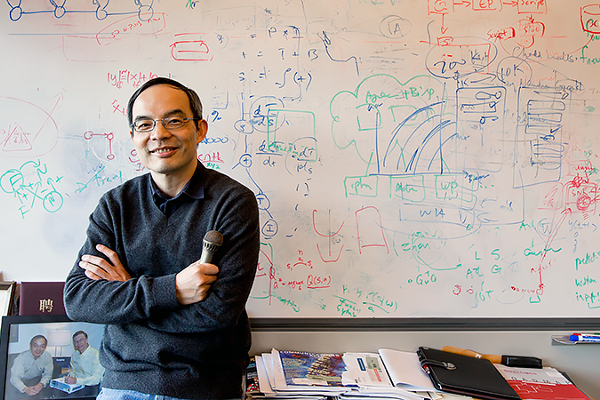 EMERGING TECH
EMERGING TECH
 EMERGING TECH
EMERGING TECH
 EMERGING TECH
EMERGING TECH
Microsoft Corp. researchers this morning revealed that they have developed an artificial intelligence capable of translating text with the same accuracy as a human.
The system, which took three separate teams to build, is designed to translate sentences from Chinese news articles into English. It incorporates several emerging neural networking approaches to match human accuracy, including a few that Microsoft developed specifically for the project.
Xuedong Huang (pictured), a technical fellow who heads Microsoft’s speech, natural language and machine translation efforts, said the system is a “major milestone” in one of the most challenging natural language processing tasks. “Hitting human parity in a machine translation task is a dream that all of us have had,” he said. “We just didn’t realize we’d be able to hit it so soon.”
One method, dubbed dual learning, involves translating English text produced by the system back into Chinese. This provides a reference against which the AI can check its accuracy and learn from mistakes. Another technique likewise invented by Microsoft enables the system to refine translations through repetition, similarly to how a human might revise their writing.
The company demonstrated that the system can match human-level accuracy by having it translate text from a research dataset called newstest2017. The test consisted of multiple evaluation rounds that each saw the AI translate several hundred sentences. According to Microsoft, a team of outside linguists verified the results by checking them against human translations.
Making Chinese news articles readable for English speakers is just the tip of the iceberg. Microsoft plans to apply the innovations that enabled the system to match human accuracy to other languages, as well as incorporate them into its products.
The company provides a free translation service similar to Google Translate, plus a commercial version geared towards enterprise. Moreover, Microsoft on Monday revealed plans to roll out an inline translation feature for its team chat service so that professionals who speak different languages can communicate more easily.
The technology from the new AI system could theoretically also be applied to speech, but Microsoft researcher Ming Zhou said real-time translation is a challenge that still needs to be addressed. Either way, the fact that the company has shown it’s possible for an AI to match human accuracy on this front represents a major research milestone.
It also marks the latest in a string of deep learning breakthroughs that Microsoft has racked up recently. Previously, an AI developed by the company beat the average score of human participants in a Stanford University reading test used as a benchmark for assessing neural networks. The achievement came a day after a team from Chinese web giant Alibaba Group Holding Ltd. became the first to reach the milestone.
THANK YOU